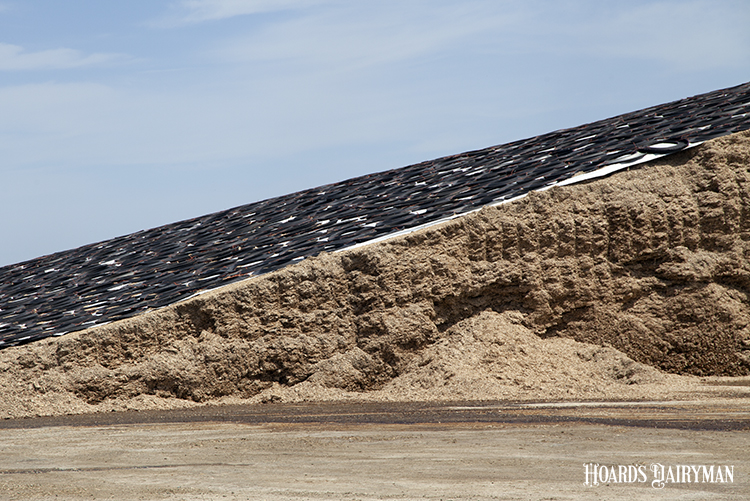
Corn silage is a central part of rations on dairy farms and running out of the staple ingredient is a scary thought. It’s also a valuable asset that, though digestibility improves with fermentation, takes time and effort to put up and occupies space on the farm. So, determining the right inventory to hold is an important question a dairy should ask.
At this point in the season, Mike Hutjens from the University of Illinois refers to ‘Christmas corn silage.’ “Hopefully you have enough inventory to get to Christmas to allow this year’s crop to ferment and become more available,” the nutrition professor emeritus said on the December 8 Hoard’s Dairyman DairyLivestream. He acknowledged that this might be more difficult for the many corn growers that found themselves dealing with drought stress this year.
Typically, it’s recommended to keep three months, six months, or even in some cases, a full year of inventory on hand, said John Goeser. The director of nutritional research and innovation at the Rock River Laboratory reminded that this is for the purpose of the corn grain.
“It’s for that starch and starch digestibility to improve,” he continued. “When we’ve experienced the new-crop slump in the past with getting into new or fresher corn silage, it’s attributable to that grain not being as soft as it will be after three or six months of fermentation.”
Goeser also noted that in his opinion, corn silage cannot get too old. “If we do a good job sealing our silage, keeping the air out, and keeping it under plastic or the silo sealed, it can be stored indefinitely,” he said.
Hutjens added a word of caution to those using upright silos, though, since the bottom of the silo will experience significant pressure. There can be some degradation in the bottom 10 feet or so of material, so be sure to clean that out year after year if possible.
A sitting investment
Of course, the value of that corn silage must also be considered. “If it’s worth $45 or $50 per ton and you have several bunkers or silos of it out there, obviously there’s a cost associated with that,” Hutjens noted.
Cornell University agricultural economist Chris Wolf also framed it another way. “There’s an opportunity cost to having all of that sitting there. It’s the same thing as having too much working capital or too much liquidity,” he explained.
“Having more inventory is, in some sense, a risk management-type of issue as long as we’re not worrying about the quality going down,” Wolf added. “It’s a tradeoff there between your risk management and your opportunity cost.”
Considering how to weigh these factors, as well as practical influences like current inventory, cow numbers, and future needs, will influence what a dairy needs to move forward.
To watch the recording of the December 8 DairyLivestream, go to the link above. The program recording is also available as an audio-only podcast on Spotify, Google Podcasts, Apple Podcasts, and downloadable from the Hoard’s Dairyman website.
Re-register to continue receiving updates
The next broadcast of DairyLivestream will be on Wednesday, January 19 at 11 a.m. CDT. In the new year, we will be moving to a new system, and you will need to re-register to continue receiving email updates and links to the webcasts. You can sign up here now. Registering once will sign you up you for all future events.








